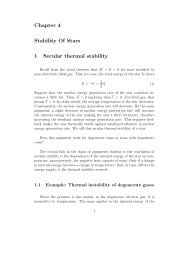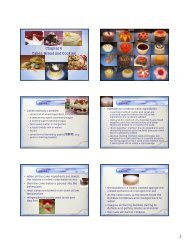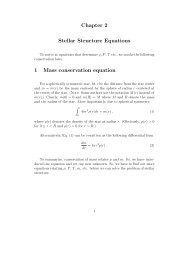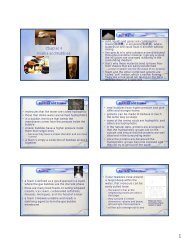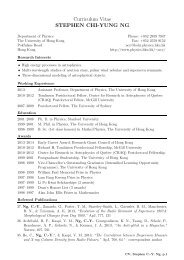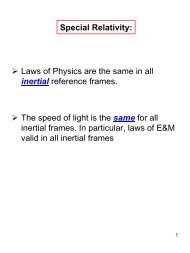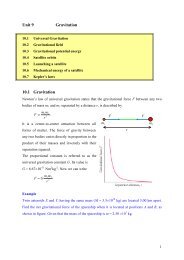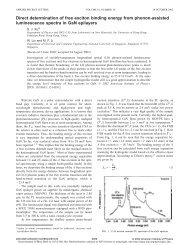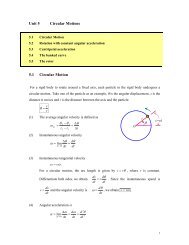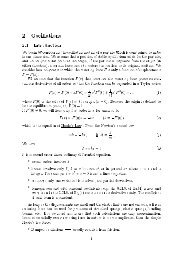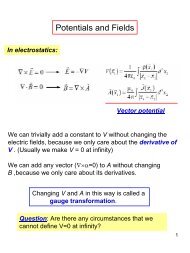Thermal Behavior of Matter and Heat Engines - Department of ...
Thermal Behavior of Matter and Heat Engines - Department of ...
Thermal Behavior of Matter and Heat Engines - Department of ...
Create successful ePaper yourself
Turn your PDF publications into a flip-book with our unique Google optimized e-Paper software.
Substance<br />
<strong>Thermal</strong> conductivity, k, [W/(m⋅K)]<br />
Silver 417<br />
Copper 395<br />
Gold 291<br />
Aluminum 217<br />
Steel, low carbon 66.9<br />
Lead 34.3<br />
Stainless steel 16.3<br />
Ice 1.6<br />
Concrete 1.3<br />
Glass 0.84<br />
Water 0.60<br />
Wood 0.10<br />
Wool 0.040<br />
Air 0.0234<br />
Table: <strong>Thermal</strong> conductivities<br />
Example<br />
One <strong>of</strong> the windows in a house has the shape <strong>of</strong> a square 1.0 m on<br />
a side. The glass in the window is 0.50 cm thick. How much heat<br />
is lost through this window in one day if the temperature in the<br />
house is 21 o C <strong>and</strong> the temperature outside is 0.0 o C?<br />
Answer:<br />
Since the thermal conductivity <strong>of</strong> glass is 0.84 W/(m⋅K) <strong>and</strong> the<br />
⎛ ∆T<br />
⎞<br />
formula for heat flow is Q = kA⎜<br />
⎟t<br />
, hence,<br />
⎝ L ⎠<br />
2 ⎛ 21K<br />
⎞<br />
8<br />
Q = [ 0.84W<br />
/( m ⋅ K)](1.0<br />
m)<br />
⎜ (24 × 60 × 60 s)<br />
= 3.0 × 10 J<br />
0.0050 m<br />
⎟<br />
.<br />
⎝ ⎠<br />
11



